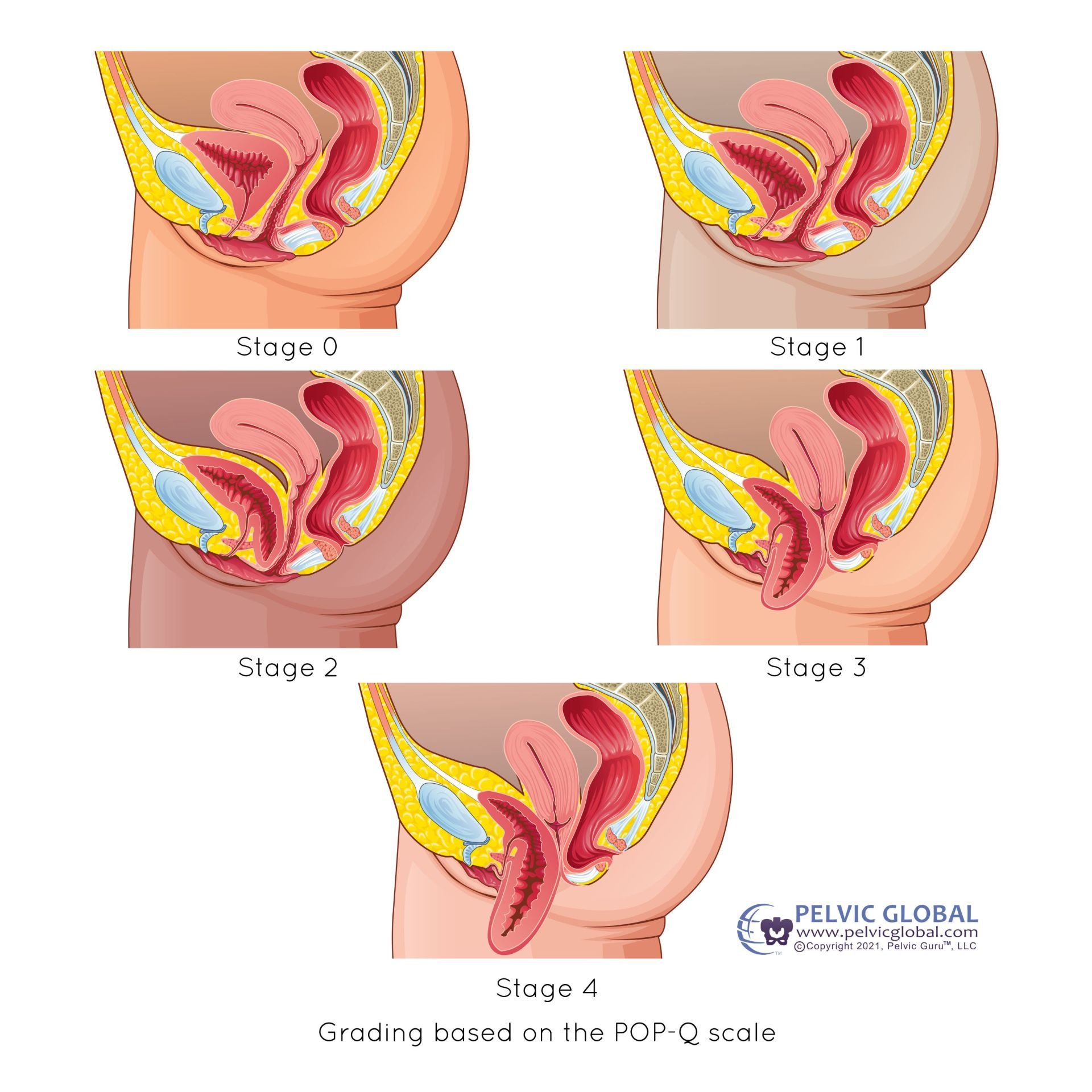Let’s Talk About Pelvic Organ Prolapse: What It Is and What You Can Do
At Empower, one of the most common (and often most misunderstood) issues we help people navigate is pelvic organ prolapse (POP). If you've ever felt heaviness or pressure in your pelvic area—especially after childbirth, a long day on your feet, or lifting something heavy—you’re not alone.
Let’s break down what prolapse actually is, the different types and grades, and most importantly, what can be done to support your body and help you feel strong again.
What Is Pelvic Organ Prolapse?
Pelvic organ prolapse happens when the muscles and connective tissues that support the pelvic organs (bladder, uterus, rectum, etc.) become stretched or weakened, allowing one or more organs to descend into or bulge out of the vaginal canal.
Think of your pelvic floor like a sling or hammock—when it’s strong and supported, it holds everything in place. When it’s overworked, under-supported, or recovering from things like pregnancy or chronic straining, that support system can start to give way.
The Different Types of Prolapse
Depending on which organ is shifting downward, prolapse is categorized into different types:
Cystocele (Bladder Prolapse): When the bladder drops into the front wall of the vagina.
Rectocele (Rectal Prolapse): When the rectum bulges into the back wall of the vagina.
Uterine Prolapse: When the uterus descends downward into the vaginal canal.
Vaginal Vault Prolapse: More common after a hysterectomy, when the top of the vagina collapses inward.
Enterocele: When a loop of the small intestine presses into the vaginal wall, usually behind or above.
Many people experience more than one type at once, especially after childbirth.
Image used with permission from Pelvic Guru®, LLC as a member of the Global Pelvic Health Alliance Membership (GPHAM)”
Grading of Prolapse
Prolapse is graded on a scale from 0 to 4 based on how far the organ has descended:
Grade 0: No prolapse—everything is in its normal position.
Grade 1 (Mild): The organ drops slightly but stays within the vaginal canal.
Grade 2 (Moderate): The organ descends close to the vaginal opening.
Grade 3 (Advanced): The organ protrudes through the vaginal opening, especially during exertion or standing.
Grade 4 (Severe): The organ is fully outside of the vaginal canal, even at rest.
Keep in mind: symptom severity doesn’t always match the grade. Some people with a Grade 1 prolapse feel uncomfortable, while others with a higher-grade prolapse may barely notice it. Your experience matters more than a number.
Image used with permission from Pelvic Guru®, LLC as a member of the Global Pelvic Health Alliance Membership (GPHAM)
Common Symptoms of Prolapse
You might notice:
A feeling of heaviness, pressure, or fullness in the pelvis or vagina
A bulging sensation or visible tissue at the vaginal opening
Urinary symptoms like leaking, urgency, or incomplete emptying
Bowel symptoms like constipation or needing to push on the vaginal wall to have a bowel movement
Discomfort with intercourse or inserting a tampon
Symptoms that worsen with standing, lifting, or the end of the day
How Pelvic Floor PT Can Help
This is where we come in. Prolapse isn’t something you just have to live with. There are effective, non-surgical options that can improve your symptoms and help you feel more confident and in control of your body.
As pelvic floor physical therapists, we create personalized care plans based on your body and your lifestyle. That might include:
Pelvic floor muscle training and coordination
Breathwork and pressure management
Core and posture integration
Guidance on movement and lifting strategies
Bowel and bladder support techniques
Information on tools like pessaries, if appropriate
Is Prolapse Forever?
Not necessarily. Prolapse can improve—sometimes significantly—with the right support and consistent care. Even if the organ position doesn’t shift dramatically, we can help reduce symptoms and give you back your sense of strength and comfort in your body.
And no matter where you're starting, you are not broken. Your body is adaptable, and healing is absolutely possible.
You're Not Alone
Pelvic organ prolapse is incredibly common, especially after pregnancy, yet it’s rarely talked about. We want you to know: you’re not alone, and you don’t have to figure this out by yourself.
If any of these symptoms sound familiar, or you’re just curious about what’s going on with your body, we’re here for you. Our goal is to support you with care, education, and tools that truly make a difference.


